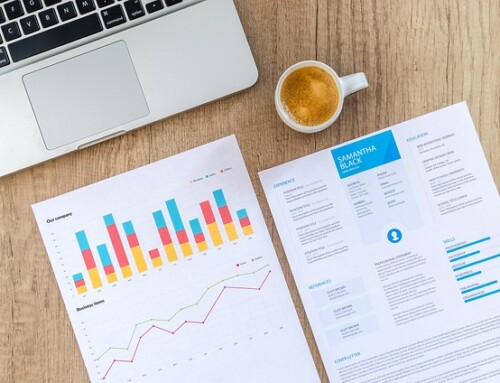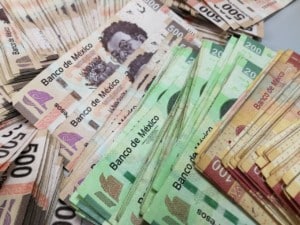We reviewed the accounting standards for the valuation of identifiable and non-identifiable intangible assets and trademarks in mergers and acquisitions processes.
Our main conclusion is that post-transaction profitability and brand value should be reported annually (in the company's annual report).
If the value of the acquired intangible asset has decreased or increased, an explanation to the financial markets should be provided as to why this occurred. We also reviewed methodological issues in carrying out these calculations, with an emphasis on understanding the intangible value of trademarks and registered trademarks versus customer-related relationships, and highlighted the importance of marketing in guiding and directing these disclosures.
Es importante para una marca (valoraciones de marcas) entender las implicaciones contables de las fusiones y adquisiciones.
The focus is on the financial interaction between the brand and accounting in companies, addressing two accounting anomalies related to the valuation of acquired and internally generated brands.
It is proposed that companies adopt the strong version of the efficient market hypothesis and provide additional information in the management's discussion and analysis (MD&A) section of the annual report to track the performance of acquired brands, showing both increases and decreases in value.
This would be beneficial for investors and lenders, as well as the marketing function, which should be responsible for measuring and reporting on the value of acquired brands.
Brands can be considered part of a company's economic value, but not of its accounting value..
It may be suggested that companies do not disclose information about the value of their brands for fear of criticism or even termination of top management as an implicit risk that should be analyzed by external auditors.
Purchase premium
In recent years, numerous intangible assets have been recorded on companies' balance sheets under IFRS and FASB standards, due to the many mergers and acquisitions transactions carried out under these standards.
We ask ourselves, what proportion of the purchase price represents a premium over the company's net asset value?
- The purchase premium is the amount of money paid above the fair value or market value of a company at the time of the transaction. This amount may reflect compensation to the shareholders of the acquired company and the expected future value of the acquisition. However, it can also be an indicator of overvaluation in the valuation of the company, which represents a risk to investors if the future value does not materialize. Therefore, it is essential to carefully evaluate the purchase premium and its impact on the valuation of the acquiring company and the acquired company.
- The net asset value of a company is the fair market value of its total assets minus its total liabilities at a given time. This value is used to determine the accounting value of a company and can be used to compare its value with that of other companies or to evaluate its financial performance. It is important to note that net asset value is not always the same as the market value of a company, which is based on the supply and demand of shares in the market and may be higher or lower than the accounting value of the company.
In recent years, studies suggest that the portion of the purchase price assigned to goodwill and intangibles is regularly over 50% and often exceeds 70%. Recent examples, such as AB InBev's $106 billion offer for SAB Miller plc, which had net assets of $19.95 billion at the time, indicate that this trend will continue.
In addition, the allocation of goodwill and intangible assets is a crucial consideration in the accounting for business combinations. The acquiring company must identify the acquired intangible assets, measure them after the transaction is completed, and list them on the balance sheet as intangible assets. The balance of the premium paid by the company appears as goodwill. An examination of the balance sheets of companies that have undergone this process confirms that goodwill is usually the larger of the two numbers.
In general, studies indicate that the portion of the premium allocated to goodwill and intangible assets is usually over 50%, and often exceeds 70% or more. Additionally, up to half of the acquired goodwill is typically allocated to identified intangibles. Therefore, properly allocating goodwill and intangible assets in the accounting of business combinations is essential, as this can have significant implications on the company's balance sheets.
Brand, usefull life
In a company merger, the lifespan of the intangibles included in the transaction must be specified, which can be either finite or indefinite. If they have a finite lifespan, they will be amortized over it. According to different merger and acquisition analyses, on average, 34% of intangibles and 38% of goodwill are assigned to the purchase price, with the total intangible premium representing 70% of the acquisition price. The main intangibles include assets related to customers, trademarks, and developed technology.
in some cases, the purchase price may be mainly assigned to goodwill, exceeding 50%.
Regarding the lifespan of intangibles, it is common to assign them an indefinite or finite lifespan, and contradictory results have been found regarding their assignment. Generally, intangibles with a finite lifespan are amortized over their lifespan, while intangibles with an indefinite lifespan are measured at the time of the transaction and are subject to annual impairment tests, without the need for amortization. Findings suggest that at least half of intangibles have a finite lifespan.
Impairment y accretion
It is important for a brand to understand the accounting implications of mergers and acquisitions. In these transactions, when a premium is paid over the net asset value, it can no longer be fully assigned to goodwill.
It is important for a brand to understand the accounting implications of mergers and acquisitions.
In its place, the acquiring company must examine the purchase price and allocate the premium to identifiable intangible assets. These intangible assets must be assigned finite or indefinite lifespans. Brands with finite lifespans are amortized over the remaining number of years, while brands with indefinite life are added to the assets on the balance sheet.
The acquiring company must examine the purchase price and allocate the premium to identifiable intangible assets.
Goodwill is treated as an asset and is tested annually for impairment. The impairment loss is transferred to the income statement as an expense, which can have negative consequences for companies. Although there is no provision for the accumulation of value, some companies are shifting their focus from identifying and measuring acquired intangibles to customer relationships.
The goodwill is treated as an asset and tested annually for impairment.
In conclusion
El texto trata sobre las normas contables para la valoración de marcas y activos intangibles en procesos de fusiones y adquisiciones. La rentabilidad y el valor de la marca después de la transacción deben informarse anualmente en el informe anual de la empresa. También se revisan cuestiones metodológicas en la realización de estos cálculos y se destaca la importancia del marketing en guiar y dirigir estas divulgaciones. Se propone que las empresas publiquen información adicional en la sección de análisis y discusión de la gerencia (MD&A) del informe anual para rastrear el rendimiento de las marcas adquiridas, mostrando tanto el aumento como la reducción del valor. El texto también aborda la prima del precio de compra, que es la cantidad de dinero que se paga por encima del valor contable o justo de mercado de una empresa en el momento de la transacción. Finalmente, se destaca la importancia de asignar adecuadamente la prima del precio de compra para evaluar cuidadosamente su impacto en la valoración de la empresa adquiriente y la empresa adquirida.
References
The Appraisal Institute is the nation’s largest professional association of real estate appraisers, offering MAI, SRA, AI-GRS, and AA-RRS designations. |2017 Brand Guidelines Update | Brand value, accounting standards, and mergers and acquisitions | https://akademiun.com | https://avacum.com | https://hbr.org
For content inquiries, please contact:
www.pdv-a.com | akademiun.com | info@pdv-a.com, info@akademiun.com







Leave A Comment